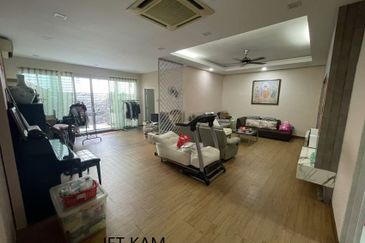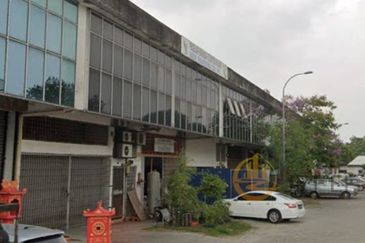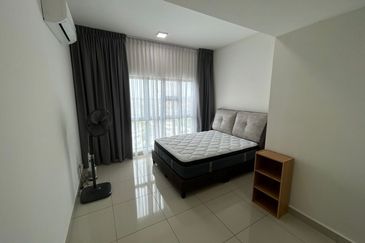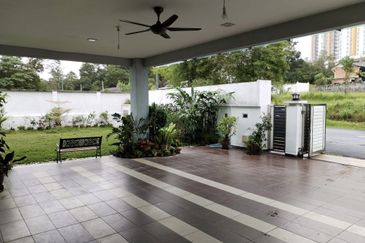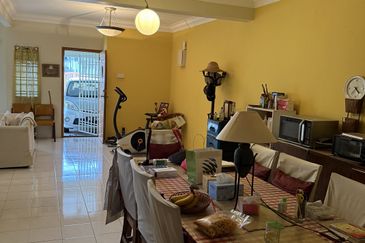Strata property owners should understand why they are contributing to the sinking fund in their buildings, and ensure that it is used in a proper manner. Unfortunately, this is lacking in Malaysia and even in Singapore, said industry experts during a panel discussion themed “What happens when the party stops?!” at EdgeProp.my’s Symposium on Excellent Property Management “Is your investment future-proof?” on April 27.
The symposium was organised by EdgeProp.my in collaboration with partner Nippon Paint Malaysia and supporting sponsors Gamuda Land and Panasonic Malaysia. The event was also supported by The Edge Malaysia.
* Your questions on crucial property management answered
The panel discussion was moderated by EdgeProp.my managing director and editor-in-chief Au Foong Yee. The panellists were Architect Centre Sdn Bhd accredited architect and trainer Anthony Lee Tee, Chur Associates founder and managing partner Chris Tan and Singapore’s Association of Property and Facility Managers (APFM) president Dr Lim Lan Yuan. All three were on the panel of judges of EdgeProp Malaysia’s Best Managed Property Awards 2019 which took place a week before the symposium.
The discussion on the sinking fund was raised from the floor when a participant brought up a case where the Joint Management Body (JMB) of a strata property was forced to use its sinking fund to pay for maintenance due to insufficient maintenance fee collections.
In response, Tan said any utilisation of the sinking fund must follow the proper process.
“You shouldn’t simply touch the sinking fund as it is reserved for certain important things only. It should not be used for things that should be paid for with maintenance charges. To use the sinking fund, you need to undergo the proper procedure of conducting a general meeting and approving the usage of the sinking fund for a specified usage at the meeting,” he said.
He warned committee members of management bodies in strata properties to be careful with the usage of the sinking fund because the management body is liable and can be sued if there is any misuse of the fund. The committee members could even end up in jail.
While owners should get involved in the management and maintenance of their property, they should also behave themselves, said Tan.
“No matter how urgent or critical it is, it is important to follow procedures,” he reiterated.
If an owner has evidence that the sinking fund is being utilised in a manner that is not in accordance with the budget approved at the annual general meeting, he or she can take action and bring the matter to the Commissioner of Buildings, the Strata Management Tribunal or the civil courts, he added.
Architect Centre’s Lee explained that the sinking fund is meant for owners to carry out major building maintenance works such as malfunctioning lifts, water-proofing, upgrades of fire-fighting equipment and other upgrading works throughout the lifespan of a building.
He added that touching the sinking fund will only lead the owners to face circumstances where they do not have sufficient funds to fix the important things in their property.
“The only way you can establish a sufficient sinking fund is to understand the building completely, and that requires long term planning. However, I have not seen any property in Malaysia having done that, not even one,” he elaborated.
In fact, many tend to spend their money on the aesthetic aspects of their building instead of important equipment that ensures the safety of the building and the occupants.
“I don’t know how people establish the sinking fund other than saying we need some money to repaint the building — I think our sinking fund goes only as far as that.
“So what happens when the lift has a problem and what happens when you need to put in new waterproofing? And if you have no money in the sinking fund, how are you going to replace fire fighting equipment, such as pumps and fire fighting tanks which are required in the fire certificate?” he asked the audience.
Meanwhile, Lim noted that Singapore also faces the same issue and it needs to educate owners about the importance of the sinking fund.
“In Singapore, we also have the same difficulties. But we are educating the owners to put aside sufficient funds so that in the future, you don’t need to cough up so much when something major in the building needs to be fixed,” he said.
He added that most professional property managers in Singapore would be able to estimate the budget needed in future and thus allow the owners to plan for the maintenance cost of a property over the long term.
“For example, if you need to spend RM300,000 in three years’ time, then every year you should set aside RM100,000 so that by the third year, you would have accumulated RM300,000 to pay for whatever expenditure you want.
Architect Centre’s Lee also urged strata property owners to get involved in the management and maintenance of their building.
“It is very important to get involved, especially when the DLP (defects liability period) is still valid. There could be things in your own property and common property areas that are not done properly or may not be operating properly,” he said, adding that the defects could expose the property to all kinds of risks and will be very expensive to fix later on.
It can be difficult sometimes given the technical nature of the defects but if you can’t do it, contact the professionals, he advised.
“When you take over a property, you are taking it over as a layperson. How do you know what’s happening in the lift motor room or pump room? It is very difficult. So it is important to understand that you may need to get a good professional manager and together, you must take ownership of these issues. Know that they belong to you and whether they run well or break down — it is up to you,” Lee said.
This story first appeared in the EdgeProp.my pullout on May 3, 2019. You can access back issues here.
TOP PICKS BY EDGEPROP

Taman Tamu Hillpark (Seksyen 4)
Batang Kali, Selangor

Alam Sanjung Serviced Apartment
Shah Alam, Selangor
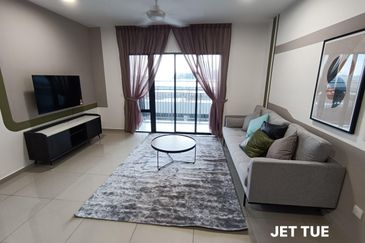
Huni Residence
Setia Alam/Alam Nusantara, Selangor
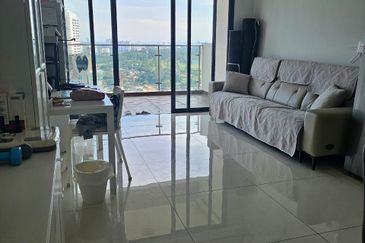
Royal Strand @ Country Garden Danga Bay
Johor Bahru, Johor

Baypoint @ Country Garden Danga Bay
Johor Bahru, Johor










